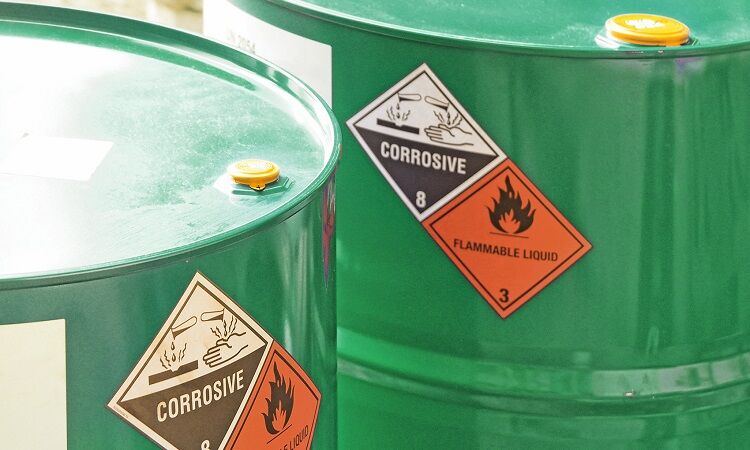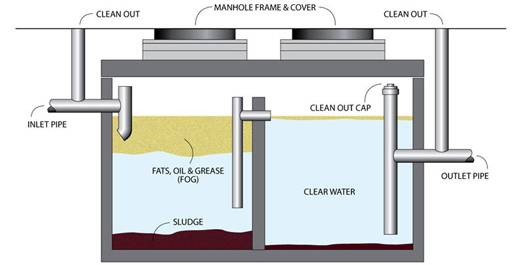Comprehensive Liquid Waste Disposal: Solutions for Houses and Companies
Just How Fluid Waste Disposal Works: A Detailed Summary of Strategies and Technologies Used

Review of Fluid Waste Kind
The complexity of liquid waste kinds necessitates an extensive understanding of their features and ramifications for disposal. Fluid waste can generally be categorized into several kinds, consisting of industrial, local, agricultural, and hazardous waste. Each group shows distinctive residential properties, requiring specific administration methods to reduce ecological and wellness risks.
Industrial fluid waste stems from making processes and usually includes a variety of impurities, such as hefty steels, solvents, and natural compounds. Community fluid waste, mainly comprising wastewater from homes and commercial facilities, consists of raw material, nutrients, and pathogens (industrial wastewater treatment). Agricultural liquid waste, including runoff from farms, might include fertilizers, chemicals, and pet waste, posing threats to water top quality and ecosystems
Hazardous fluid waste is defined by its poisoning, sensitivity, or prospective to trigger damage. This category consists of substances like acids, bases, and specific chemicals that necessitate stringent handling and disposal procedures. Understanding these diverse liquid waste types is essential for creating effective disposal techniques and making certain conformity with environmental laws. Appropriate classification and characterization are essential for applying proper treatment methods and minimizing the adverse effects on public wellness and the atmosphere.
Physical Therapy Techniques

Testing is the first action, where larger fragments and particles are gotten rid of from the fluid waste using screens or grates. In sedimentation containers, much heavier bits clear up at the base, developing a sludge layer, while the made clear liquid can be further dealt with.
Filtering is one more necessary method that involves passing the liquid through porous products, such as sand or membrane layers, to catch smaller sized bits. This action enhances the high quality of the liquid, making it ideal for succeeding treatment procedures.

Chemical Treatment Techniques
Chemical treatment strategies are crucial for properly handling liquid waste, particularly in dealing with dissolved and colloidal impurities that physical methods might not adequately get rid of. These methods utilize numerous chemical agents to counteract, speed up, or change hazardous materials right into much less hazardous types.
One typical technique is coagulation and flocculation, where chemicals such as alum or ferric chloride are contributed to advertise the gathering of suspended particles. This procedure boosts sedimentation, permitting less complicated elimination of the resulting sludge. Additionally, oxidation procedures, utilizing representatives like chlorine or ozone, are utilized to break down complicated natural compounds and virus, providing the waste much safer for discharge or additional treatment.
Neutralization is another crucial strategy, which adjusts the pH of acidic or alkaline waste streams to neutral levels, preventing prospective injury to downstream systems and the environment. In addition, progressed oxidation processes (AOPs) use mixes of oxidants and ultraviolet light to break down persistent contaminants, attaining a higher level of treatment effectiveness.
Organic Treatment Processes
Biological therapy processes play an important duty in the management of liquid waste by making use of microorganisms to decompose organic matter and reduce impurity degrees. These procedures can be extensively categorized right into cardiovascular and anaerobic treatments, each utilizing particular microbial neighborhoods to accomplish reliable waste deterioration.
Aerobic therapy entails using oxygen to help with the failure of organic materials by germs. This procedure is frequently implemented in triggered sludge systems, where oygenation storage tanks offer a conducive environment for microbial development, causing the oxidation of organic toxins. The resultant biomass can be divided from treated effluent via sedimentation.
In comparison, anaerobic treatment takes place in the absence of oxygen, relying upon various bacteria Web Site to damage down raw material. This technique is especially useful for high-strength waste, as it generates biogas, a renewable energy resource, while minimizing sludge production. Technologies such as anaerobic digesters are often employed in community and industrial applications.
Both anaerobic and aerobic biological therapies not only lessen the environmental impact of liquid waste yet also facilitate resource recovery, making them vital elements of sustainable waste administration techniques. Their performance, versatility, and performance support their widespread execution throughout various fields.
Emerging Technologies in Disposal
Innovative approaches to fluid waste disposal are swiftly advancing, driven by innovations in innovation and a boosting emphasis on sustainability. Among these arising technologies, membrane bioreactors (MBRs) have acquired traction for their capability to incorporate organic therapy with membrane filtering, leading to top quality effluent that can be reused in numerous applications. MBRs allow smaller sized impacts and a lot more effective procedures compared to conventional systems.
Another appealing growth is the use of anaerobic food digestion incorporated with nutrient recuperation technologies, which not only treats liquid waste but also produces biogas and recuperates important nutrients like nitrogen and phosphorus. This twin advantage enhances resource effectiveness and reduces ecological impact.
Furthermore, progressed oxidation procedures (AOPs) are being embraced for the destruction of intricate natural pollutants. These techniques utilize powerful oxidants and catalysts to damage down pollutants at the molecular level, offering an extremely efficient remedy for tough waste streams.
Additionally, the assimilation of expert system and device understanding in waste administration systems is maximizing functional performance and predictive maintenance, causing decreased expenses and improved environmental conformity. These modern technologies mirror a considerable shift in the direction of more efficient and lasting fluid waste review disposal methods.
Verdict
In verdict, reliable liquid waste disposal demands a detailed understanding of different methods and technologies. By continually progressing these methodologies, it becomes possible to resolve the expanding challenges associated with fluid waste, ultimately contributing to environmental security and source healing.
Liquid waste disposal is a critical aspect of environmental monitoring, needing an extensive understanding of numerous techniques and technologies customized to different waste types. Liquid waste can generally be categorized into a number of types, consisting of read this article industrial, metropolitan, farming, and dangerous waste. Agricultural liquid waste, consisting of drainage from ranches, may consist of plant foods, pesticides, and pet waste, presenting risks to water high quality and environments.
Various physical therapy techniques play a critical function in handling fluid waste successfully - industrial wastewater treatment.In conclusion, efficient fluid waste disposal demands a comprehensive understanding of various techniques and innovations